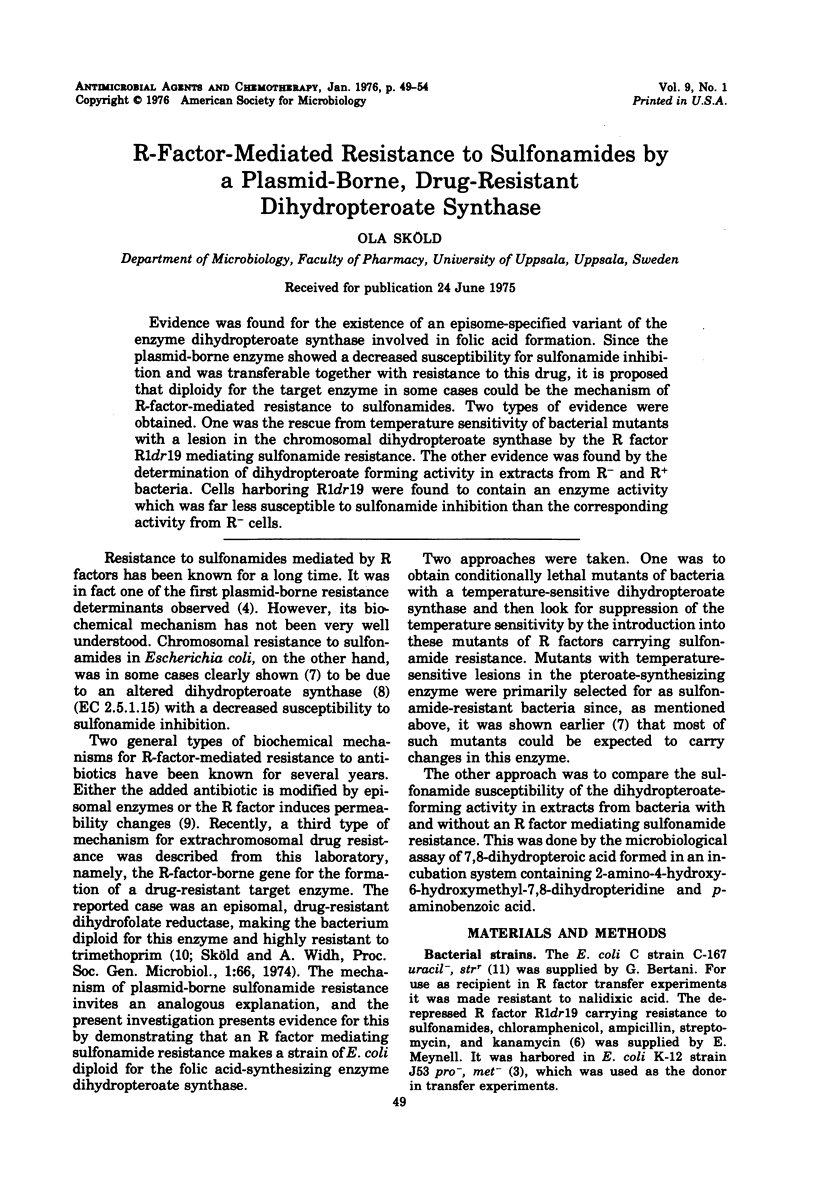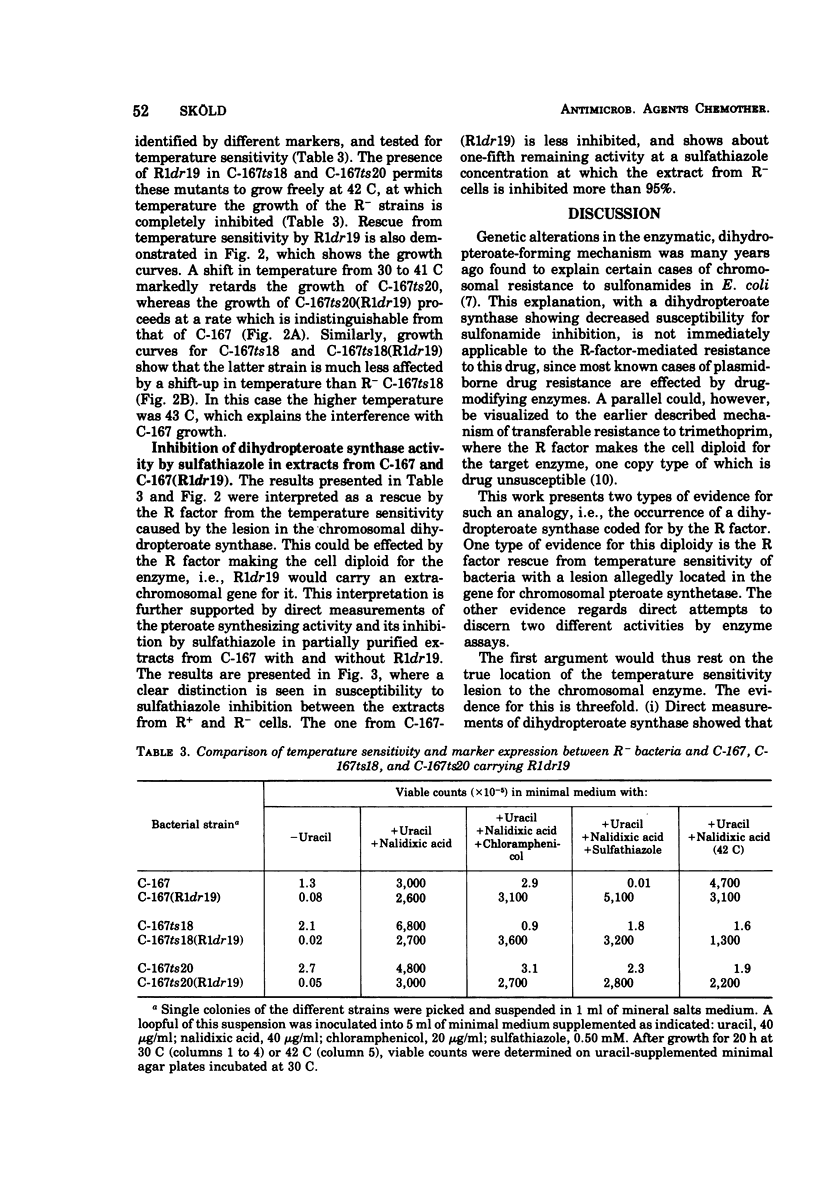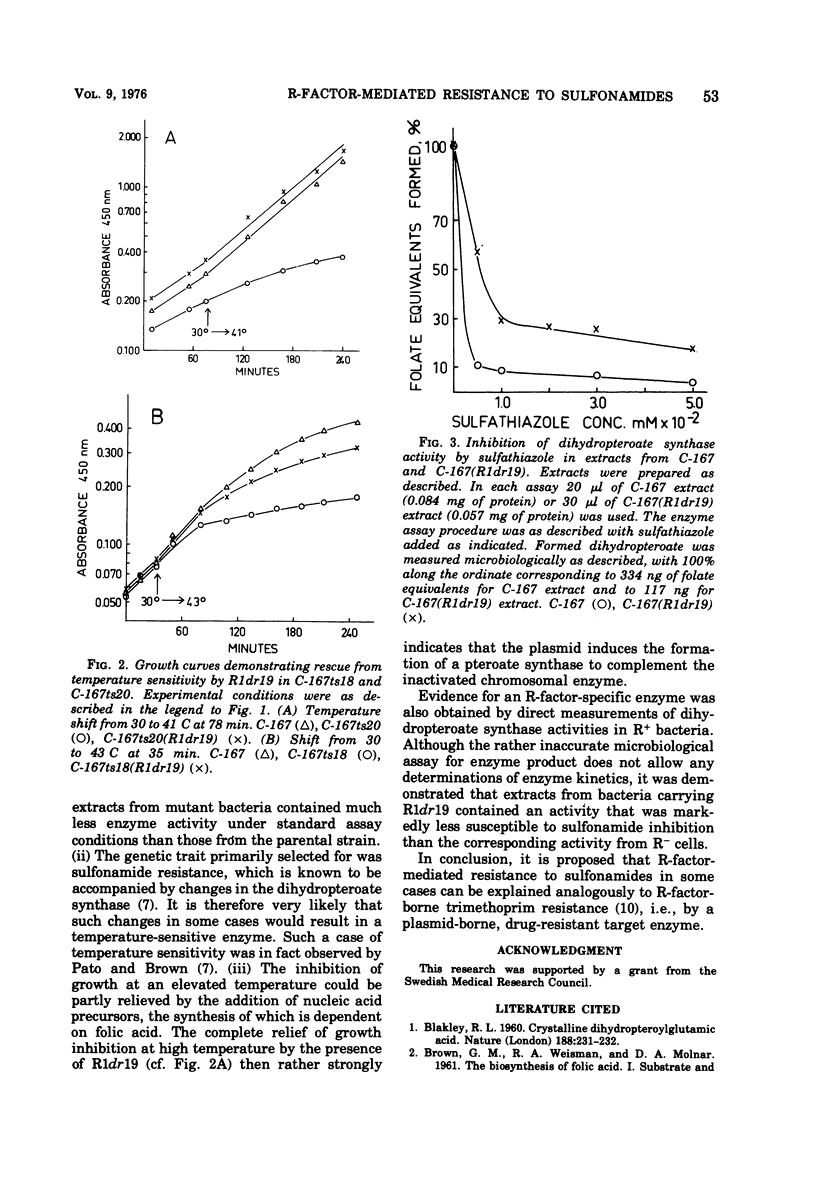Abstract
Evidence was found for the existence of an episome-specified variant of the enzyme dihydropteroate synthase involved in folic acid formation. Since the plasmid-borne enzyme showed a decreased susceptibility for sulfonamide inhibition and was transferable together with resistance to this drug, it is proposed that diploidy for the target enzyme in some cases could be the mechanism of R-factor-mediated resistance to sulfonamides. Two types of evidence were obtained. One was the rescue from temperature sensitivity of bacterial mutants with a lesion in the chromosomal dihydropteroate synthase by the R factor R1dr19 mediating sulfonamide resistance. The other evidence was found by the determination of dihydropteroate forming activity in extracts from R− and R+ bacteria. Cells harboring R1dr19 were found to contain an enzyme activity which was far less susceptible to sulfonamide inhibition than the corresponding activity from R− cells.
Full text
PDF





Selected References
These references are in PubMed. This may not be the complete list of references from this article.
- CLOWES R. C., ROWLEY D. Some observations on linkage effects in genetic recombination in Escherichia coli K-12. J Gen Microbiol. 1954 Oct;11(2):250–260. doi: 10.1099/00221287-11-2-250. [DOI] [PubMed] [Google Scholar]
- LOWRY O. H., ROSEBROUGH N. J., FARR A. L., RANDALL R. J. Protein measurement with the Folin phenol reagent. J Biol Chem. 1951 Nov;193(1):265–275. [PubMed] [Google Scholar]
- Meynell E., Datta N. Mutant drug resistant factors of high transmissibility. Nature. 1967 May 27;214(5091):885–887. doi: 10.1038/214885a0. [DOI] [PubMed] [Google Scholar]
- PATO M. L., BROWN G. M. MECHANISMS OF RESISTANCE OF ESCHERICHIA COLI TO SULFONAMIDES. Arch Biochem Biophys. 1963 Dec;103:443–448. doi: 10.1016/0003-9861(63)90435-1. [DOI] [PubMed] [Google Scholar]
- Richey D. P., Brown G. M. The biosynthesis of folic acid. IX. Purification and properties of the enzymes required for the formation of dihydropteroic acid. J Biol Chem. 1969 Mar 25;244(6):1582–1592. [PubMed] [Google Scholar]
- Shaw W. V. Biochemical mechanisms of transferable drug resistance. Adv Pharmacol Chemother. 1971;9:131–172. doi: 10.1016/s1054-3589(08)60446-9. [DOI] [PubMed] [Google Scholar]
- Sköld O., Widh A. A new dihydrofolate reductase with low trimethoprim sensitivity induced by an R factor mediating high resistance to trimethoprim. J Biol Chem. 1974 Jul 10;249(13):4324–4325. [PubMed] [Google Scholar]
- Wiman M., Bertani G., Kelly B., Sasaki I. Genetic map of Escherichia coli strain C. Mol Gen Genet. 1970;107(1):1–31. doi: 10.1007/BF00433220. [DOI] [PubMed] [Google Scholar]


